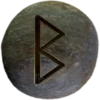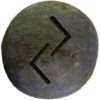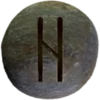Last Updated on April 30, 2025
Table of Contents


Spring Equinox
Ostara (pronounced, OH-stah-rah) is a spring festival that celebrates renewal, fertility, and light. People honor it during the spring equinox, around March 20th or 21st in the Northern Hemisphere. The day and night balance equally. Afterward, daylight grows stronger. Many cultures link this time to rebirth and awakening.
The name Ostara comes from reconstructed Germanic mythology. Another common spelling is Ēostre (pronounced AY-oh-streh). This spelling appears in historical texts written in Old English. The name may relate to the Proto-Germanic word austrōn, meaning “dawn.” ![]()
The Venerable Bede, a monk from the 8th century, wrote about Ēostre. He claimed that people in Anglo-Saxon England once honored a goddess by that name. Her name became linked to the Christian holiday Easter. However, no original pre-Christian myths about Ēostre survive.
Modern observances of Ostara focus on nature’s return to life. People plant seeds, decorate eggs, and honor animals like hares. These symbols connect with ancient ideas of fertility and growth. Children often enjoy egg hunts and games. Adults might perform rituals, give thanks to nature, or reflect on personal growth. Ostara encourages people to set new goals or revive old ones.
The hare or rabbit is a strong symbol of Ostara. Hares reproduce quickly, so they symbolize fertility. In some old tales, hares lay eggs. This idea helped inspire the modern Easter Bunny.
Decorated eggs also carry ancient meaning. They represent life, birth, and potential. Long before Christianity, Persians and Egyptians gave eggs as springtime gifts. Today, people still color eggs in bright shades. Each color may carry symbolic meaning. Yellow means energy or sunlight. Green shows new growth. Red stands for life force. Blue represents clarity. Eggs may also carry blessings or intentions for the season.
Ostara Symbols and Rituals
Many people celebrate Ostara by spending time in nature. They walk through blooming fields or sit in quiet forests. They often watch the sunrise to honor the growing light.
Rituals may include lighting candles, burning incense, or planting symbolic items. People may create altars with spring items like fresh flowers, seeds, or pastel cloths.
Common herbs include lavender, thyme, and violets. These grow in spring and carry themes of healing and peace.
Food is also important. People enjoy meals made from seasonal vegetables, fruit, bread, and eggs. Some make honey cakes or seed-filled loaves to honor the Earth’s bounty.
The balance between light and dark at the equinox can inspire reflection. People may meditate on duality, balance, and transformation.
Some write down intentions and bury them with seeds in the soil. As the plant grows, so does the goal. This symbolizes inner growth that matches outer change. Group ceremonies often include singing, drumming, and storytelling. These create bonds and keep old customs alive.
Ostara continues to evolve today. While its ancient roots remain unclear, its symbols still resonate. People use this time to pause, renew, and grow. Whether through ceremony, craft, or quiet walks, Ostara invites joy and hope.
Runes Associated with Ostara
The Elder Futhark runes Berkanan and Jēra strongly connect to Ostara. Berkanan (ᛒ) symbolizes birth, renewal, and new beginnings. It often represents the budding earth and fertility. This rune appears during times of healing and growth. Springtime rituals often invoke Berkanan to support life’s emergence from winter. ![]()
Jēra (ᛃ) signifies cycles, harvests, and the rewards of effort. Though it usually ties to the end of a cycle, its presence at Ostara reflects balance and anticipation. It teaches patience and awareness of natural rhythms. The equinox embodies this harmony between light and dark, a key aspect of Jēra’s message.
Together, Berkanan and Jēra guide the spirit through rebirth and transformation. They show how nature follows purpose and rhythm. These runes offer wisdom to those seeking change. Through them, Ostara becomes a moment of both hope and steady transition.
Its Importance to Asatruar
Asatruar honor this time as a sacred turning point. Day and night stand in balance. The earth wakes from winter’s sleep. New life pushes through soil and branch.
Ostara celebrates fertility, growth, and renewal. The goddess Ēostre, brings light and warmth. People give thanks for her blessings.
Asatruar gather to share food, tell stories, and perform blóts (sacrifices). They may offer eggs, seeds, or mead. This festival strengthens bonds between folk and gods. It reconnects people with nature’s rhythm. Symbols like hares, eggs, and flowers honor rebirth. Children often join in, learning old ways.
Ostara teaches hope, patience, and reverence. It reminds Asatruar that light returns. Life always follows darkness. The wheel turns again.

